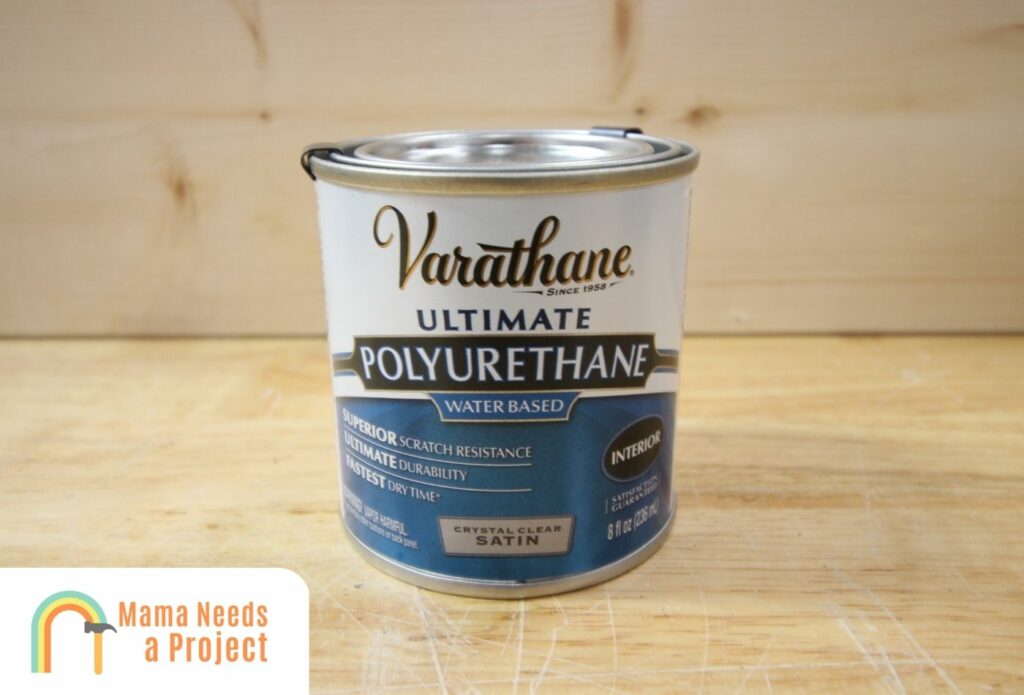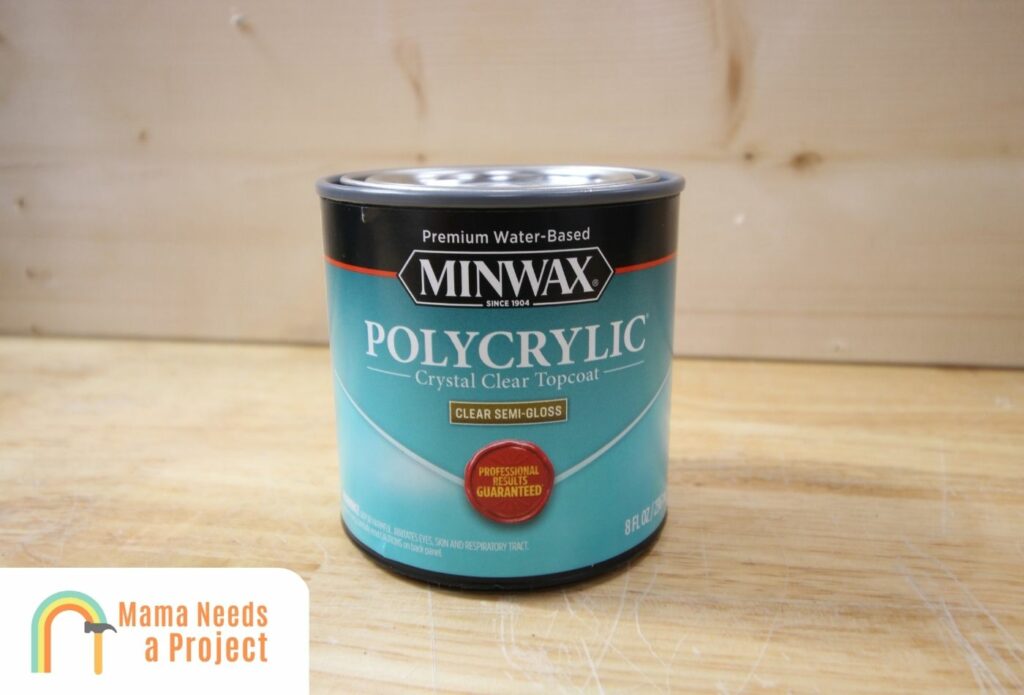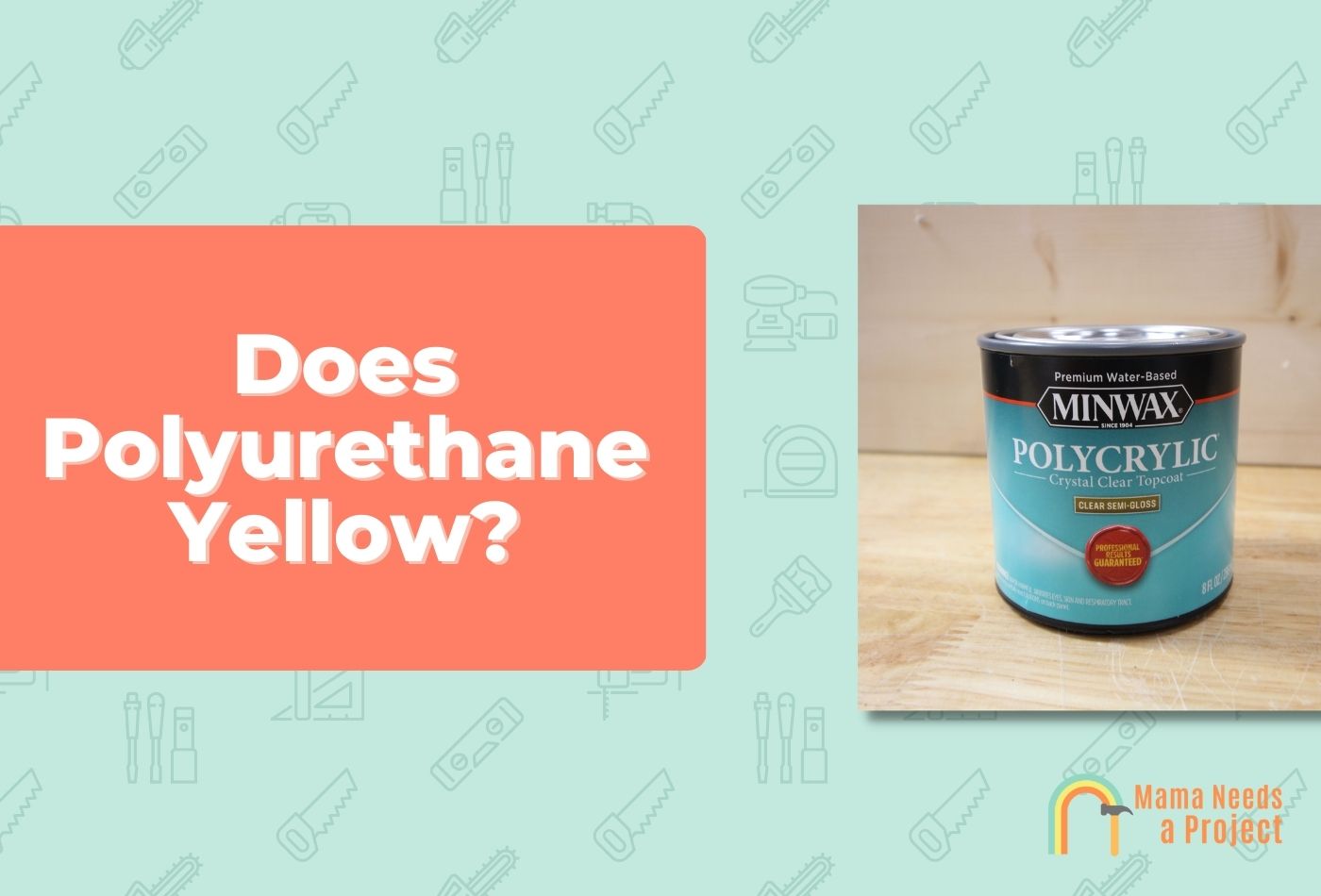Does Polyurethane Yellow? Here’s What You Should Know!
Polyurethane is a popular finish that’s applied to a variety of materials, mainly because it makes surfaces more resistant to wear and tear while enhancing their visual appeal at the same time.
But most polyurethane yellows over time, meaning it’s incompatible with numerous wood stains and paints, which is something you should know before applying it.
In this post, I’ll examine both oil based polyurethane and water based polyurethane and how you can limit yellowing polyurethane. Let’s dig in!
- Yes, all polyurethanes yellow eventually, but some yellow faster than others. Oil-based polyurethane yellows quickly and its tint is more pronounced, whereas water-based polyurethane yellows slowly over time.
- Yellowing is caused by oxidation, leaching, and over-exposure to UV rays, and it can be prevented as well as corrected.
Why Does Polyurethane Yellow?
All polyurethanes yellow over time, but yellowing isn’t caused by one factor, rather it’s the result of two processes that happen concurrently as polyurethane dries and cures.
These processes are known as oxidation and leaching.
Oxidation
Polyurethane turning yellow over time is mainly the result of oxidation, which happens as the poly cures or hardens.
Oxidation is basically a chemical reaction that occurs when a substance makes contact with oxygen or an oxidizing substance. Usually, the result is discoloration—think rust, brown apple flesh, and yellow polyurethane.
As oxidation transpires, chromophores form, and these give polyurethane that infamous yellowish tint.
Leaching
Leaching is different from oxidation, but it too causes polyurethane to yellow over time.
When polyurethane is applied to a surface, whether it be wood, metal, brick, or concrete, it slowly absorbs some of the dirt, chemicals, etc. that were on the workpiece when it was applied.
The absorption of these particles causes the poly to yellow.
Therefore, if a material is rife with dirt, dust, chemicals, and other particles when poly is applied, it’ll yellow quickly. Moreover, it probably won’t last long, since poly really only adheres if a surface is 100% clean before application.
Additional Factors
In addition to the two processes described above, a couple other factors accelerate the yellowing process.
UV Rays
Over-exposure to direct sunlight speeds up the oxidation process, which means poly that’s left in the sun for a long time will turn yellow faster than poly that hasn’t been over-exposed to direct sunlight.
This is definitely something to consider when applying polyurethane to outdoor structures and furnishings.
To prevent UV rays from accelerating polyurethane yellowing, you can apply a UV-protective coating, but more on that later!
Note: You don’t have to worry about indoor furniture that’s coated with polyurethane being negatively affected by sunlight, as the UV rays don’t come through windows unless they’re open.
Excessive Heat
Excessive heat also speeds up the oxidation process, which is something to consider when you’re remodeling your kitchen and thinking about what kind of furniture you want.
In addition to accelerating the yellowing process, excessive heat—particularly temperatures in excess of 200°—can also degrade poly.
Does Oil-Based Polyurethane Yellow?
While all polys are prone to yellowing, oil-based polyurethanes are especially prone to this, mainly because their components collectively give them an amber tint.
Therefore, when you apply oil-based poly, it’s likely you’ll see its amber tint as you brush or roll it on your workpiece.
One of the main reasons why oil-based polyurethane is used on darker woods is because its amber tint blends in nicely.
Want to add some color to your projects? Consider tinting polyurethane!
How Long Does It Take Oil-Based Poly to Yellow?
Depending on the material it’s applied to, oil-based poly may display a yellow tint immediately after application.
For example, if you apply oil-based polyurethane to a wood surface that was recently coated with white paint, you’ll see the yellow tint right away.
Some woods, however, blend well with poly, so it could be weeks, months, or even years before you notice your poly has yellowed.
With other materials though, it’s easier to identify when yellowing has transpired.
Does Water-Based Polyurethane Yellow?

Yes, water-based polyurethanes yellow over time, but at a much slower rate. The main reason why is because unlike oil-based polyurethane, water-based polyurethane doesn’t include oils.
Yes, they go through oxidation, they leach, and they’re affected by UV rays just like oil-based polys are, but the absence of oils means yellowing doesn’t happen as quickly.
And even after years of yellowing, a water-based poly finish may not look all that out of place, especially if it was applied properly.
Because it doesn’t turn yellow as quickly, thin coats of water-based poly are often applied to indoor furniture. Here, poly will mainly be exposed to artificial light, but this doesn’t turn poly yellow like direct UV rays do.
Water-based poly is quick-drying too; it’s usually dry 1-2 hours after application. However, it’s not incredibly durable, which is something to consider before you apply it to hardwood floors.
Does Polycrylic Yellow?

Polycrylic is a water-based protective finish that’s often applied to a range of materials, and this too yellows over time.
However, like water-based poly, the yellowing process doesn’t transpire rapidly, since it resists UV rays better and is without the oils that make oil-based products naturally yellow.
How to Fix Yellow Polyurethane
It’s possible to fix yellowing polyurethane before it gets out of hand, but you need to act quickly, otherwise you’ll have to remove the existing finish before putting down a new one.
Mineral Spirits
You can use mineral spirits (paint thinner) to take the yellow tint out of polyurethane.
But you need to be careful when using mineral spirits, as applying too much may take off more poly than you want. That said, this isn’t as strong as chemical paint stripper.
Basically, you just pour some mineral spirits on a soft cloth and then rub it on the poly in a circular motion until you’ve taken the tint off.
This works better with water-based poly since the shade of yellow isn’t as pronounced.
Important: If you’re considering using this yellow-removal method on water-based poly, use mineral spirits sparingly, as water-based isn’t the most durable polyurethane, and mineral spirits can tear right through it if you’re not careful.
Light Sanding
Doing some light sanding can also take the yellow out of polyurethane, but this option is better for oil-based polys since you don’t have to worry as much about taking off too much poly while standing.
Just make sure when you’re done sanding that the surface is flat overall.
Also, refrain from sanding with too much pressure, as you may take off too much poly, especially if a water-based version is what you’re sanding.
And if sanding is your go-to method for fighting poly yellowing, you’ll need to do this regularly—maybe once a month—to ensure the finish doesn’t get too yellow.
But eventually, all this sanding will make applying more polyurethane necessary.
Sunlight
Over-exposing polyurethane to UV rays tends to speed up the yellowing process, but it’s possible to over-expose poly so much that the yellow tint fades away.
The only problem with this method is the poly will look faded overall after being relentlessly battered by UV light. So while it may be free of an unappealing yellow tint, it won’t look visually appealing overall.
That said, if a faded poly look is what you’re after but you still don’t want the yellow tint, by all means try this method.
How to Stop Polyurethane from Yellowing
Luckily, there are a few things you can do to prevent polyurethane yellowing from messing up a wood surface.
Proper Application
If you want to prevent yellowing polyurethane, you need to make sure you apply it properly.
Mainly, you need to make sure the surface you’re applying the poly to is clean beforehand. This way, when the poly leaches, it’ll have barely any dirt, dust, or chemicals to absorb.
Also, you must not apply too much poly, especially if you’re using oil-based poly.
Dry Surface
Polyurethane should only be applied to a dry surface, whether you’re applying it to wood, metal, concrete, or another material.
If the material isn’t dry when poly is applied, not only will the poly adhere poorly but it’ll get discolored as well. This problem is more likely if you’re applying poly after stain or paint.
Stain-Blocking Primer
Using stain-blocking primer before you put down polyurethane is a wise move if the poly is going to be exposed to direct sunlight on a regular basis.
This may not be necessary, however, if the poly you’re using has UV-resistant properties.
After the primer has had adequate time to dry, sand it before applying polyurethane.
Exterior Polyurethane
Need to protect outdoor structures and furnishings from the sun, weather, and other erosive elements? Then choose an exterior polyurethane. These polys are made with UV-blockers, so you don’t have to worry about them being faded or overly yellowed by the sun’s rays.
Rust-Oleum & UV-Resistant Sealants
Rust-Oleum and UV-resistant sealants work well with exterior polys, but poly that’s used indoors really doesn’t need this added protection.
Along with providing UV protection, both sealants help poly resist the elements too.
Can Paint Cover up Yellow Polyurethane?
Darker paints can mask the yellow tint of polyurethane, but they can only do so much since they’re under the polyurethane coating.
Plus, the yellow tint of polyurethane can be illuminated by UV light even if the paint under the poly is black, dark brown, etc.
Of course, you should avoid applying oil-based polyurethane to white paint, since the amber tint this poly boasts and white paint don’t go well together.
Does Polyurethane Discolor Wood Stain?

Polyurethane, whether it’s oil-based or water-based, won’t discolor wood stain unless it’s applied improperly.
Even if a polyurethane coating turns yellow over time, the yellowing process won’t affect the stain underneath. However, the stain may discolor on its own.
That said, if the poly was applied properly, the stain shouldn’t discolor, at least not quickly.
If poly is applied to wood stain when it’s wet, one of the results may be discoloration of both finishes.
In this case, you’d have to remove both the stain and the poly, clean the surface, and then sand lightly before stain and poly could be applied again.
Is Polyurethane the Only Finish That Yellows Over Time?
Polyurethane isn’t the only finish that yellows over time. Specifically, linseed oil, lacquer, and epoxy yellow too.
Here’s what you should know about these poly alternatives:
Linseed Oil
Linseed oil yellows too, which should come as no surprise since it’s an oil-based finish. When first applied, it’ll be more of an amber color, but after a week or so of drying it’ll display a pale yellow tint.
Since this oil is usually applied to fine wood furniture, it’s color isn’t a big deal. In fact, usually it accentuates the colors bare woods boast.
Lacquer
Nitrocellulose lacquer is often applied to wood to accentuate its qualities, particularly the grain and the wood’s natural color.
But lacquer yellows over time, so it’s seldom used on lighter woods, like maple, beech, pine, and ash.
And unlike other finishes, lacquer offers UV protection, which in part explains why it only turns slightly yellow over time.
Check out these differences between lacquer and polyurethane!
Epoxy Resin
Epoxy goes through oxidation as well, meaning it yellows over time just like polyurethane. UV light can speed up the yellowing process and make the tint more pronounced.
Check out this epoxy vs polyurethane comparison for more info!
Which Wood Hides Yellowing Better: Hardwood or Softwood?
Hardwoods tend to be darker, and some are virtually the same color as the amber tint oil-based polys boast, which explains why oil-based polys are used on hardwoods more than anything else.
There are, however, light hardwoods, and these tend to look better with non-yellowing finish.
Softwoods tend to boast lighter colors, so water-based polys that only yellow slightly over time are better for these.
Final Thoughts
At the end of the day, all polyurethanes yellow to some degree. But since some don’t yellow as quickly or obviously as others, it’s best to use these polys when your goal is a clear finish.
Oil-based polyurethanes yellow a lot quicker than water-based polys and polycrylic, and an oily poly’s yellow tint is more pronounced.
Yellowing is largely the result of oxidation, leaching, and UV ray exposure, and you can do a variety of things to prevent yellowing, just like there are options for correcting it once it happens.

